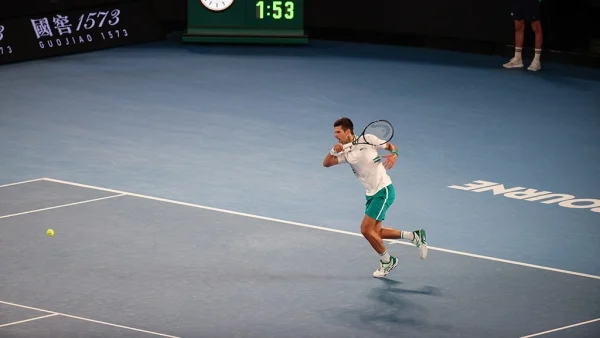Novak Djokovic is already widely considered the best returner in the history of men’s tennis.
And the world No.1 used that shot to great effect in the AO 2021 final against Russia’s Daniil Medvedev.
According to insights powered by Infosys, Djokovic adopted a more aggressive receiving position and cranked up the power on his second serve returns – to great effect.
RELATED: Ninth AO title for supreme Novak, Medvedev humbled
Medvedev won just 32 per cent of points on his second serve. And Djokovic won the match – plus a ninth Norman Brookes Challenge Cup – by a resounding scoreline of 7-5 6-2 6-2.
Resounding returns
Medvedev, who entered the final on a 20-match win streak, generated higher average return speeds than Djokovic, especially on second serves.
But just like beaten women’s finalist Jennifer Brady, he was doing so from far further back in the court than his opponent.
On average, Medevdev was returning second serves from more than two metres behind the baseline, whereas Djokovic was meeting second-serve returns, on average, half a metre inside the baseline.
This was more aggressive positioning – 0.6 metres higher up in the court – than in Djokovic’s previous six matches to get to the final.
FEATURE: Djokovic sticks to familiar Melbourne script
And the Serb’s average second-serve return speed also increased in the final compared with his previous matches, up 6km/h to 112.9km/h.
This meant Djokovic imposed significant time pressure on Medvedev, allowing the Russian just 430 milliseconds to react to second-serve returns flying across the net.
The average time pressure imposed by male players at AO2021 on second-serve returns? Almost 500 milliseconds. And Medevdev’s time pressure on second-serve returns in the final was even lower, at 533 milliseconds.
Forehand dominance
It was clear Djokovic was trying to be the aggressor in this final, and it was not only when receiving serve – it also shone through in how he used his forehand.
He managed to hit a forehand 63.6 per cent of the time on his first shot after his serve – Medvedev did so just 46 per cent of the time – and he played more than 20 per cent of his forehands from inside the baseline, whereas Medvedev struck only five per cent of forehands from this position.
This approach made sense, given he was carrying an injury into the final, and was aware of Medevdev’s penchant for turning matches into a baseline grind.
The last time they met in Australia, at the ATP Cup in 2020, Djokovic had required almost three hours to subdue the Russian in a best-of-three set match.
This time, the contest lasted just one hour and 53 minutes.
